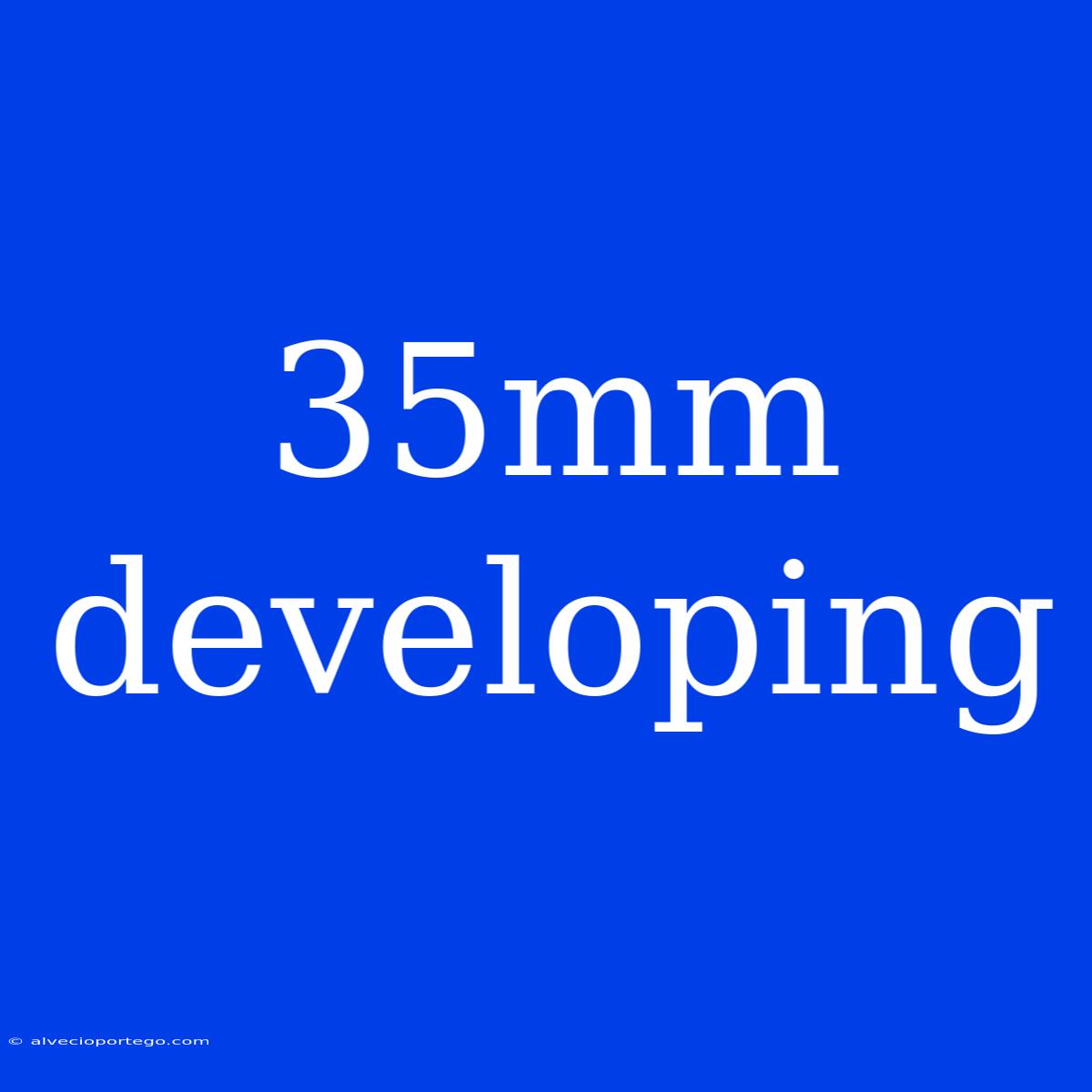Developing 35mm Film: A Guide for Beginners
Developing your own 35mm film can be a rewarding and fulfilling experience. It allows you to fully control the creative process, experiment with different techniques, and appreciate the magic of analog photography. While it may seem daunting at first, developing film at home is actually quite accessible and requires minimal equipment.
What You'll Need
Before you dive into the darkroom, here's a list of essential equipment:
- Developing Tank and Reels: These hold your film and allow you to process it without light contamination. There are various sizes and designs available, so choose one that suits your needs.
- Chemicals: The most common developing process uses four main chemicals: developer, stop bath, fixer, and water. Each chemical plays a vital role in transforming the exposed film into a negative.
- Thermometer: Precise temperature control is crucial for consistent results.
- Measuring Cups and Cylinders: For accurately measuring your chemicals.
- Darkroom Safelight: A safelight with a red or amber filter allows you to work in the darkroom without fogging your film.
- Film Changing Bag: This allows you to safely load and unload film reels in complete darkness.
- Film Drying Rack: To hang your developed film and allow it to dry.
- Cleaning Supplies: You'll need some basic cleaning supplies, such as paper towels, cotton swabs, and cleaning solution.
The Process: A Step-by-Step Guide
1. Prepare Your Darkroom: Make sure your darkroom is completely dark and equipped with your safelight. Ensure your developing tank, reels, chemicals, and other equipment are ready.
2. Load the Film: In the darkroom, using a film changing bag, carefully load the film onto the reels. The film is loaded backwards, starting with the leader end.
3. Develop: Place your loaded film reel into the developing tank and fill the tank with developer solution. The developer will convert the exposed silver halide crystals in the film to black metallic silver, forming the negative image. Follow the developer's recommended time and temperature.
4. Stop Bath: After developing, rinse the film with water and then immerse it in a stop bath. The stop bath neutralizes the developer, preventing further development.
5. Fix: Next, place the film in the fixer solution. The fixer removes the unexposed silver halide crystals, making the image permanent and resistant to light.
6. Wash: After fixing, thoroughly wash the film with water to remove any remaining chemicals.
7. Dry: Finally, hang the film on a drying rack to air dry completely.
Tips and Tricks
- Experiment with Different Developers: Different developers can create unique looks and contrast in your negatives.
- Maintain Consistent Temperature: Ensure all your chemicals are at the correct temperature for optimal results.
- Follow Instructions: Always refer to the instructions provided with your developing chemicals for accurate times and procedures.
- Start with a Simple Process: Begin with a standard black and white developing process before exploring more complex techniques.
- Practice Makes Perfect: Developing film is a learned skill. Don't be discouraged if your first few attempts aren't perfect.
Resources
- The Darkroom Cookbook: An excellent guide to developing both black and white and color film.
- Ilford's Developing Guide: Comprehensive information on Ilford's film developing processes.
- Online Forums: Numerous online forums and communities dedicated to photography, where you can find advice, tips, and inspiration.
Developing 35mm film is a rewarding and creative journey that allows you to explore the intricacies of analog photography. Embrace the process, experiment with different techniques, and enjoy the magic of developing your own images.

